Skiing for the first time can be very exciting and for me, it’s still exciting every year again!
I’ve been skiing since I was 6 years old and by now, I definitely know all the ins and outs of skiing. From painful ski boots to freezing fingers, I’ve been through it all!
When you go skiing for the first times, you need a lot of stuff, and what exactly might be a little overwhelming. There’s just so much skiing gear you need right? And how do you recognize good-quality gear?
But don’t worry, in this post I’ll guide you through the absolute skiing essentials for beginners so you don’t have to worry about getting cold on the slopes or getting lost in the ski area!
Let’s dive into it!
Note: this page contains affiliate links. If you buy through one of these links I earn a small commission (at no extra cost to you). For more information read my Disclosure Policy.
The absolute skiing essentials for beginners
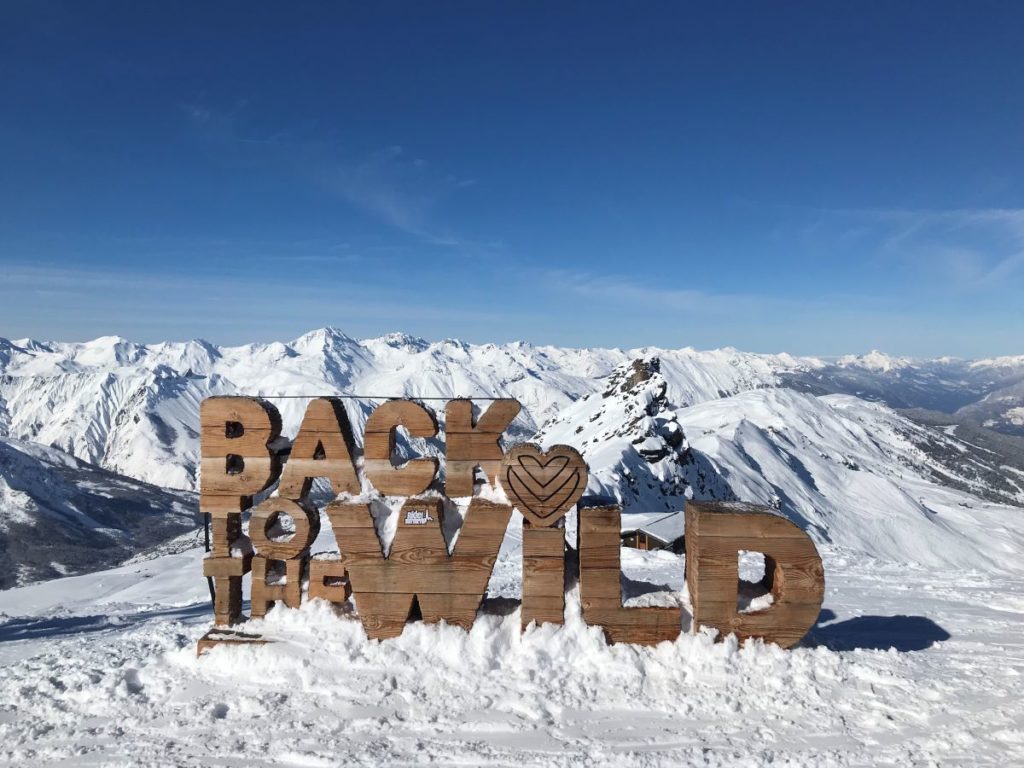
Gloves

An important essential piece you should have if you don’t want your fingers to freeze off is gloves. Specifically, search for ski gloves and don’t settle for the cheapest ones. Believe me, cold fingers can ruin a lot of the ski excitement.
If you like them, mittens will be a little bit warmer than gloves since your fingers are put together and can warm each other. However, this might be a little bit less convenient for skiing.
You’ll also encounter gloves that have a hole in them to blow your fingers warm when it’s cold. Although it’s a nice feature, you mostly also blow in some moisture and if you do it often your hands can get wet from it.
When it’s really cold, I sometimes wear 2 pairs of gloves: very thin ones and my normal thick gloves. Although this is said to help against the cold, I haven’t felt a difference yet. Better remedies against cold fingers are to keep on moving and wear mittens instead!
One very important feature that your gloves should have is a string to put around your wrist. This limits the chance of you losing your gloves on a ski lift.
Helmet

Although this wasn’t the case 20 years ago, everyone wears a helmet now and in some ski areas, it is even mandatory to wear helmets. I encourage you to wear one as well, for obvious safety reasons, and since chances are high that you’ll fall once or twice as a beginning skier ;).
However, even if you’re an experienced skier you should wear one! If I would crash at 70 km/h with my head against a tree it wouldn’t end well. Thus, helmets do save lives (just like gloves save fingers).
To buy a helmet I’d recommend going to a ski/sports store and try some helmets yourself instead of ordering one online. It’s very important that it fits well on your head and this is something you can only feel when trying it on! If you do want to buy a helmet online, I’ll make a suggestion below!
Important features to watch out for when choosing a helmet are whether it can be closed off entirely for wind and snow and whether your ski goggles fit with your helmet.
Ski jacket
Your ski jacket is a very important skiing essential for beginners. Look for one that isn’t too small, because you need to be able to wear some layers underneath.
General ski jackets will also have a little pocket on your arm, either your forearm or above. This is necessary to put your ski pass in and access the ski lifts easily.
I also advise you to look for a jacket with pockets on the inside so that you can keep some cash and your phone close to your body. Putting your phone on the inside of your jacket will prevent it from running low on battery due to the cold because your body warmth will keep it at a good temperature.
Very important is that you look at the water-resistant metric of your jacket. Buy one with a high level of water resistance because when you ski on a snowy day you can get pretty soaked!
I’m not going to make a suggestion for this because choosing a ski jacket is all about taste and budget. You can go crazy by paying hundreds of euros for a designer jacket or you can simply buy a good quality budget jacket as well. Most important is that it fits with your ski pants!
Ski pants

Similar to your ski jacket, water resistance is very important when you buy your pants. Make sure you check the level of water resistance and the warmth of your ski pants before buying and preferably, make sure it matches your ski jacket!
When searching for ski pants, also check whether your pants have an extra part with straps or a button to close underneath so that it tightly fits your boots. Plus, suspenders will make sure that your pants stay high and well in place. This way, no snow can come up your trousers!
Tip! You can never go wrong with black ski pants, they fit under everything!
Socks

As you will be wearing long boots when skiing, it’s very important to have long special ski socks as well. These are usually moderately thick and have special features to support your feet in specific places.
Important elements to look for when buying ski socks are the materials, you’ll want to buy socks made for a large part out of wool since this is the warmest. Plus, the socks should cover your entire shin, otherwise, you’ll get very painful legs after just one day of skiing!
Baselayers

When you go skiing, just wearing a sweater and ski jacket won’t be enough. You definitely need those base layers!
What I mean by base layers is a special t-shirt and pants made to keep you warm on the pistes. These are made of special kinds of fabric to make sure you’ll survive a whole day at temperatures minus 0.
When you buy your base layers, take a good look at the fabric from which it’s made. Because not all fabric will give you the same comfort and warmth! Anything made from wool will give you ultimate warmth, but make sure it’s not too thick because then you’ll get too hot on the pistes, especially when you’re skiing later in the season.
I personally use base layers from the brand Craft and I’m very happy with those, they always keep me warm, even in a snow storm!
Tip! Make sure the baselayers cover your whole body (arms and legs included)!
Goggles

When skiing it’s also important that you have the right type of goggles. Ideally, you have goggles for both bright and low-light conditions (meaning sun, snow and even night). Depending on the weather conditions you’ll need different lenses although there already exist goggles for all types of light conditions such as photochromic lenses.
If you don’t prefer goggles, you can take your sunglasses with you for the sunny days and buy goggles for the snowy days only.
Please don’t underestimate the right pair of goggles! This will determine how much you’ll be able to see on the piste. When there is a lot of sunlight, you need proper protection for your eyes but when it’s very cloudy, you’ll need goggles that leave enough light through to see all bumps in the slopes.
On a very cloudy day, it can be difficult to see the irregularities on the slopes. This is called flat light and can be overcome by buying goggles with the right contrast-enhancing technology and specifications. Definitely check out my guide on the best ski goggles for flat light to learn more about choosing the right ski goggles!
Neck gaiter

You really can’t underestimate the power of neck gaiters. When there are snowy days and the wind is icy, these will keep you covered from the cold!
A neck gaiter is meant to warm your neck all the time, but also your chin and mouth when it gets really cold. Put the bottom under your jacket and the top under your helmet for the greatest efficiency and warmth!
After a snowy day, make sure to put your neck gaiter to dry so you can use it the next day again. Or, make sure you have a spare neck gaiter with you to switch when weather conditions are really bad!
Sunscreen
It’s indeed very ironic, why would you need sunscreen in the mountains by temperatures below zero? But the truth is that being so high up in the mountains and the reflection of white snow make it very likely to get sunburned!
No special sunscreen is required, just the ones you take to the beach in summer will be fine! Also, you might want to take lip balm with you that protects against the sun too. The cold can have a negative effect on your lips and some people are very sensitive to that.
Make sure to apply sunscreen at least twice a day to avoid returning home with a face like a lobster!
Backpack

When skiing it’s very important to stay hydrated, and since you’re doing sports (yes, I easily burn 1500 calories on a day of skiing intensively) you might want to bring a snack as well. Therefore, it’s best to take a backpack with you. This doesn’t have to be a big one since there exist special small backpacks for skiers!
One important element you’ll want to watch out for is how easy it is to take it off. This is something you’ll need to do fast when going on a ski lift. You’ll also want to make sure it is safe against pickpockets because unfortunately, that happens as well on the slopes.
What you should NOT buy
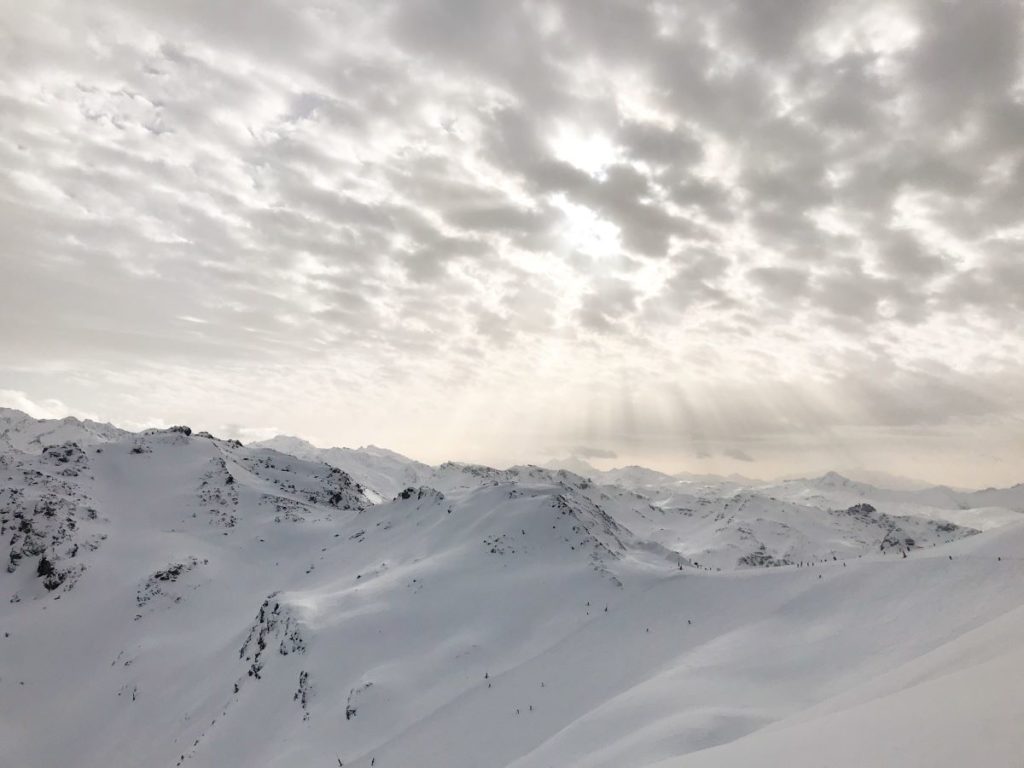
When you’re going skiing for the first time, you absolutely don’t need to buy everything. Even for me, as an experienced skier, it’s not necessary to buy everything. I personally don’t have skis and ski poles myself even though I’ve been skiing for over 15 years.
There are a lot of rental companies out there that will rent equipment to you. This might be cheaper than buying equipment at home and then having to transport it to the ski area once a year when you go skiing.
Here’s a list of things you should NOT buy but rent:
- Ski poles
- Ski boots
- Skis
If you’re really planning on skiing just this one time, you can also rent your helmet instead of buying it.
Renting tips
I also have some tips for when you’re renting ski stuff for the first time and you want the best equipment for the best price.
One important tip is to reserve your equipment well in advance. When I go skiing the equipment is already reserved months in advance! Why? Because many companies provide discounts for travelers that reserve their equipment in advance.
The best period to reserve your equipment is during the holidays since those companies often offer special deals, think about Black Friday and Christmas!
And last but not least, don’t settle for the first price you see, compare different companies to find the best price! If necessary, ask your hotel/hosts what rental company they recommend.
Other practicalities
When you go skiing, there are some other practicalities to arrange before your trip besides the skiing essentials for beginners.
First of all, decide on your ski area. This might be the one that’s closest to your home or the one with the most kilometers of slopes, or maybe it’s the area that’s highest in the mountains if you’re skiing later in the season.
Whatever your requirements are, I have some basic tips if you want to ski in the Alps:
- Austria is the most children-friendly ski country
- France has the largest ski slopes, a good choice for experienced skiers
- Switzerland is the most expensive country but has the most difficult slopes as well
- Italy is a good second choice if you want to go to Switzerland since it’s much cheaper but the mountains on the border are the same!
Related: The 7 highest ski resorts in Europe
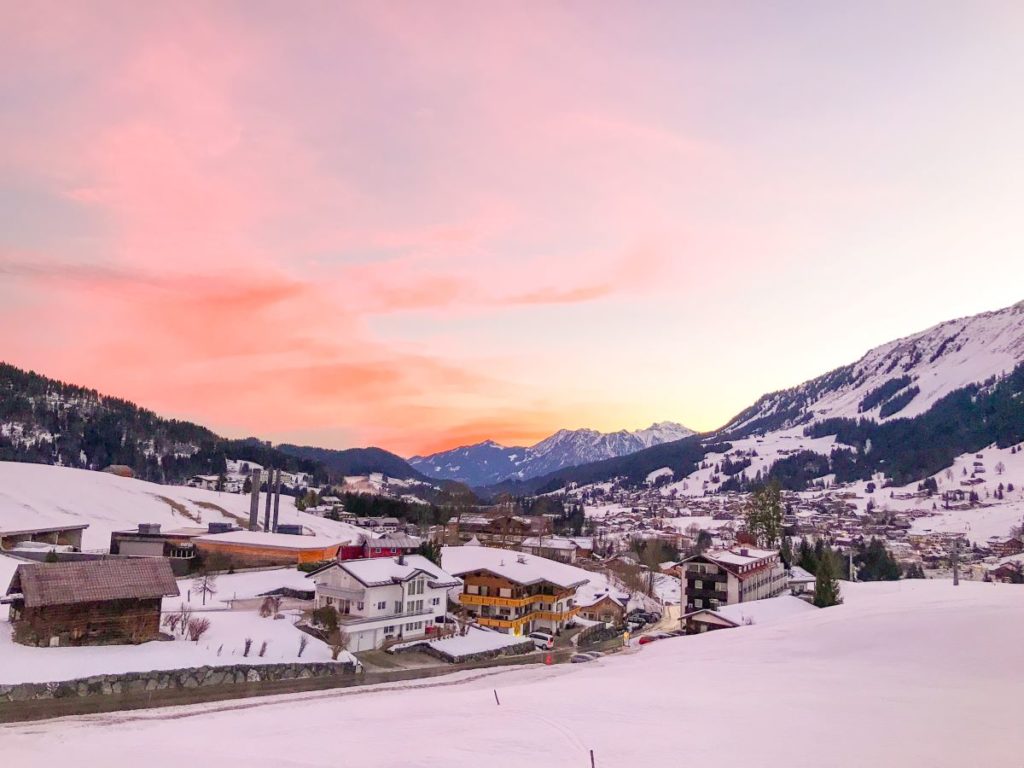
Also, make sure that you have a ski pass! Some hotels offer to get a ski pass for you or you could get one at a local info point.
When getting a ski pass, make sure you know how many days you’re going to ski and where you want to ski. Most of the time, you can buy a ski pass for the whole area or parts of the area.
If you don’t know how to ski yet, or you could use some help, book ski classes in time! Private classes are great if you want to learn fast but also very expensive. Group classes are great if you love to meet new people!
One last tip: don’t buy anything on the spot, it’s expensive!
Try to buy all your gear beforehand, because prices can go up a whole lot if you buy stuff in a ski area!
Note: if you want to go beyond the basics, take a look at this expert roundup for the best ski gear!
Conclusion
Going skiing for the first time shouldn’t be stressful at all!
With this list, you’ll have all the skiing essentials for beginners with you on your ski trip and the additional tips will help you along the way. I truly hope you’ve found this article useful!
Do you have any more ski tips? Let me know in the comments!






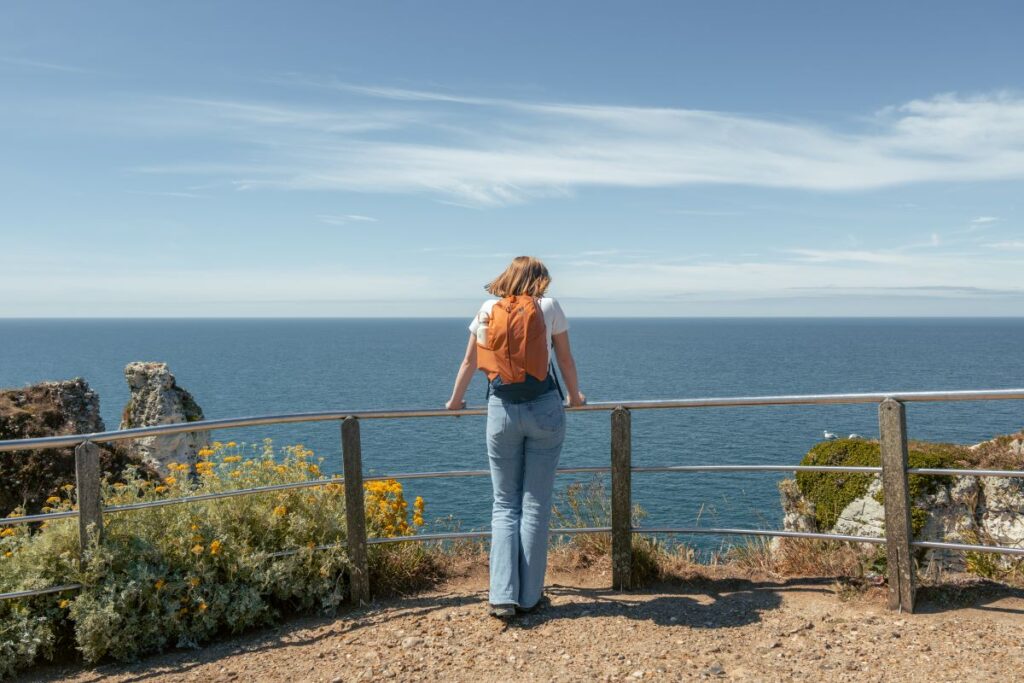

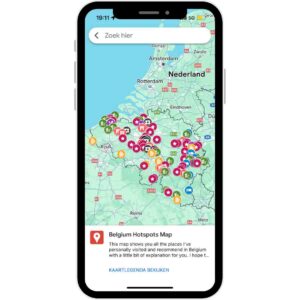

12 thoughts on “Skiing Essentials For Beginners: Everything You Need”
I’ve never been skiing but really regret not going while I was in Germany! Hopefully we’ll have another EU trip soon- but if not, Colorado here i come. Thanks for all these tips!!! Super handy!
You really should go skiing one day, it’s a wonderful experience!
A great and very helpful list for 1st time skiiers. Don’t forget the hot pockets for your hands! It is such a great way to enjoy the winter!
Thanks for the tip!
We plan on skiing for the first time in January and I’m so excited, will save this list!
So exciting! I hope this list will help you a lot!
Wow these are great pointers, my husband and I are planning to go to the snow this year so I’m saving this in the event we end up skiing!
Yeey! I hope you’ll be able to go soon!
This is a really helpful post, especially for someone like me who has never been skiing (I’m a klutz). I especially love how you put what NOT to buy.
Thank you! I really think it’s important to not buy any unnecessary things, especially when it’s your first time!
I would love to ski one day. Though I have to admit the picture of the lift scared me. I would be so scared to fall on my face. One day. When I do, I will come back here to act as my guide and some good YouTube videos on actually how to ski.
If it helps, I’ve never seen someone fall off a lift before ;). Practise is golden! I hope you’ll be able to go soon!